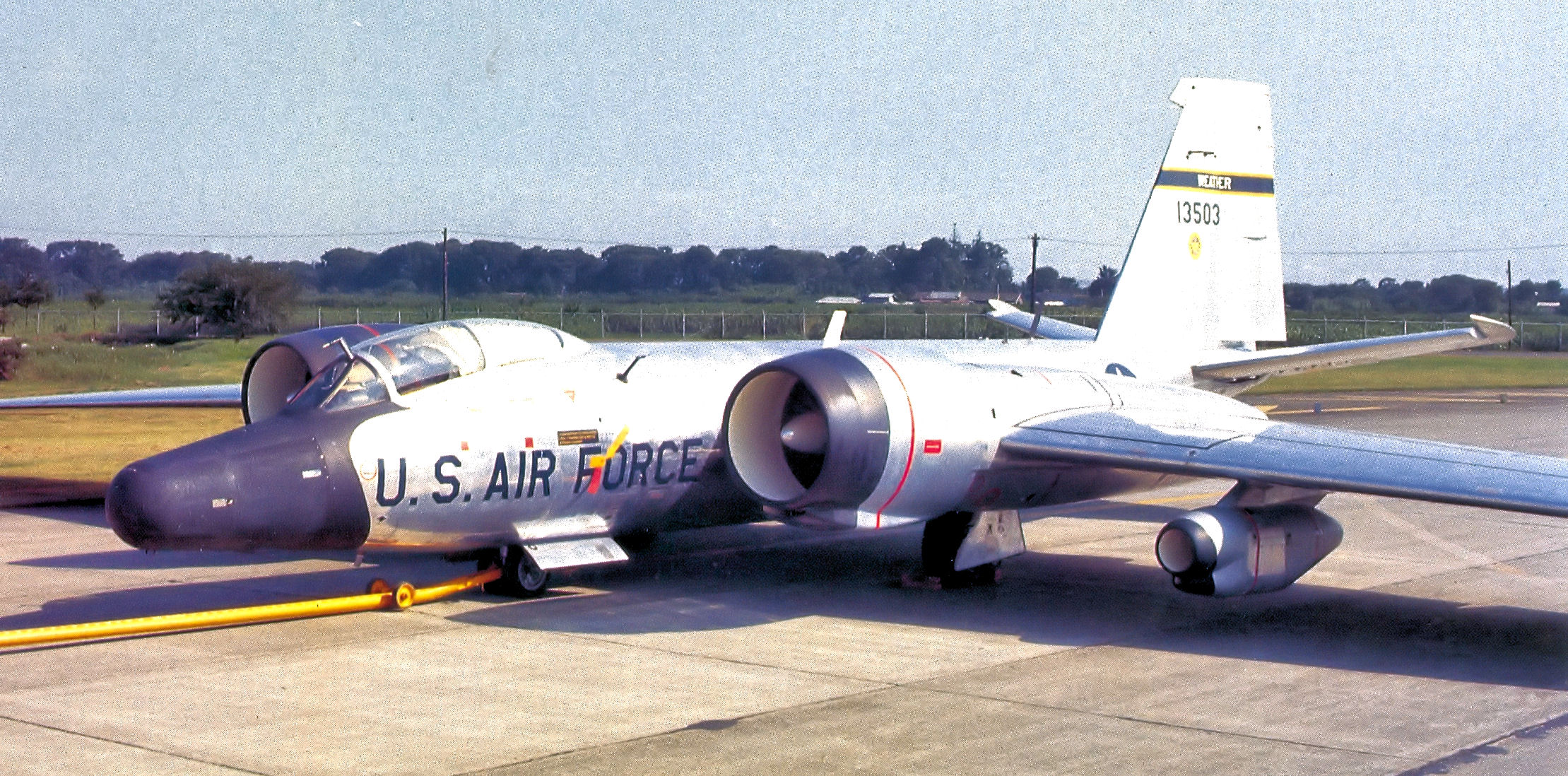|
9th Weather Reconnaissance Wing
The 9th Weather Reconnaissance Wing is an inactive United States Air Force organization. Its last assignment was with Air Weather Service at McClellan Air Force Base, California, where it was inactivated on 31 August 1975. History Weather reconnaissance units were assigned to two different units numbered nine, the 9th Weather Reconnaissance Group and the 9th Weather Reconnaissance Wing The group was first activated as the 9th Weather Group in 1953 at Andrews Air Force Base, and was responsible for providing weather observation and forecasting services for units of Air Research and Development Command. In 1957, the group moved to Scott Air Force Base, Illinois and provided similar services for units of Military Air Transport Service. In July 1961, the group moved to McClellan Air Force Base, California, where it was redesignated 9th Weather Reconnaissance Group and assumed responsibilities for Air Weather Service's worldwide reconnaissance mission. On 8 July 1965 the 9th We ... [...More Info...] [...Related Items...] OR: [Wikipedia] [Google] [Baidu] |
Flag Of The United States Air Force
The flag of the United States Air Force was introduced in 1951 and consists of the U.S. Air Force's crest and shield, which itself comprises 13 white stars and the Department of the Air Force's coat of arms on a field of blue. The 13 stars represent the 13 original British American colonies, the three star grouping at the top portray the three Departments of the Department of Defense (Army, Navy, and Air Force). The crest includes the North American bald eagle (the national bird of the US), the cloud formation depicts the creation of a new firmament, and the wreath, composed of six alternate folds of silver and blue, incorporates the colors of the basic shield design. History The flag was officially adopted by President Harry S. Truman on 26 March 1951. Elements of the flag's design are used on the Department of the Air Force seal as well as the U.S. Air Force's service mark. Dorothy G. Gatchell designed the flag itself, whereas the crest and shield that are featured on it were ... [...More Info...] [...Related Items...] OR: [Wikipedia] [Google] [Baidu] |
RB-57F Canberra
The Martin/General Dynamics RB-57F Canberra is a specialized strategic reconnaissance aircraft developed in the 1960s for the United States Air Force by General Dynamics from the Martin B-57 Canberra tactical bomber, which itself was a license-built version of the English Electric Canberra. It was operationally assigned to the Air Weather Service for weather reconnaissance involving high-altitude atmospheric sampling and radiation detection in support of nuclear test monitoring, but four of the 21 modified aircraft performed solely as strategic reconnaissance platforms in Japan and Germany. Three of the modified aircraft were destroyed with the loss of their crews while performing operationally. The remainder were re-designated '' WB-57F'' in 1968. Four of the survivors were subsequently used by NASA for high-altitude atmospheric research. The others were retired from 1972 to 1974 and placed in storage. , three WB-57Fs are the only B-57 aircraft model still flying, in service ... [...More Info...] [...Related Items...] OR: [Wikipedia] [Google] [Baidu] |
WB-57D Canberra
The Martin RB-57D Canberra was a specialized high-altitude strategic reconnaissance aircraft developed from the Martin B-57 Canberra tactical bomber, a licence-built version of the English Electric Canberra. It was used by the United States Air Force during the 1950s prior to operational use of the Lockheed U-2. Development The RB-57D was built strictly as a high-altitude reconnaissance aircraft. It originated in a December 1952 USAF study funded by the Wright Air Development Center for a turbojet-powered special reconnaissance aircraft with a radius of that could operate at altitudes of . Subsonic performance was considered to be acceptable and it was felt that no defensive armament would be needed. The RB-57D was unique and set the stage for high-altitude reconnaissance operations in the rarefied air of the stratosphere. Preliminary specifications were prepared by the Air Force on 27 March 1953. The project was carried out in high secrecy. It was known as Weapon System MX-2147 ... [...More Info...] [...Related Items...] OR: [Wikipedia] [Google] [Baidu] |
WB-47E Stratojet
The Boeing B-47 Stratojet (Boeing company designation Model 450) is a retired American long-range, six-engined, turbojet-powered strategic bomber designed to fly at high subsonic speed and at high altitude to avoid enemy interceptor aircraft. The primary mission of the B-47 was as a nuclear bomber capable of striking targets within the Soviet Union. Development of the B-47 can be traced back to a requirement expressed by the United States Army Air Forces (USAAF) in 1943 for a reconnaissance bomber that harnessed newly developed jet propulsion. Another key innovation adopted during the development process was the swept wing, drawing upon captured German research. With its engines carried in nacelles underneath the wing, the B-47 represented a major innovation in post-World War II combat jet design, and contributed to the development of modern jet airliners. Suitably impressed, in April 1946, the USAAF ordered two prototypes, designated "XB-47"; on 17 December 1947, the first p ... [...More Info...] [...Related Items...] OR: [Wikipedia] [Google] [Baidu] |



